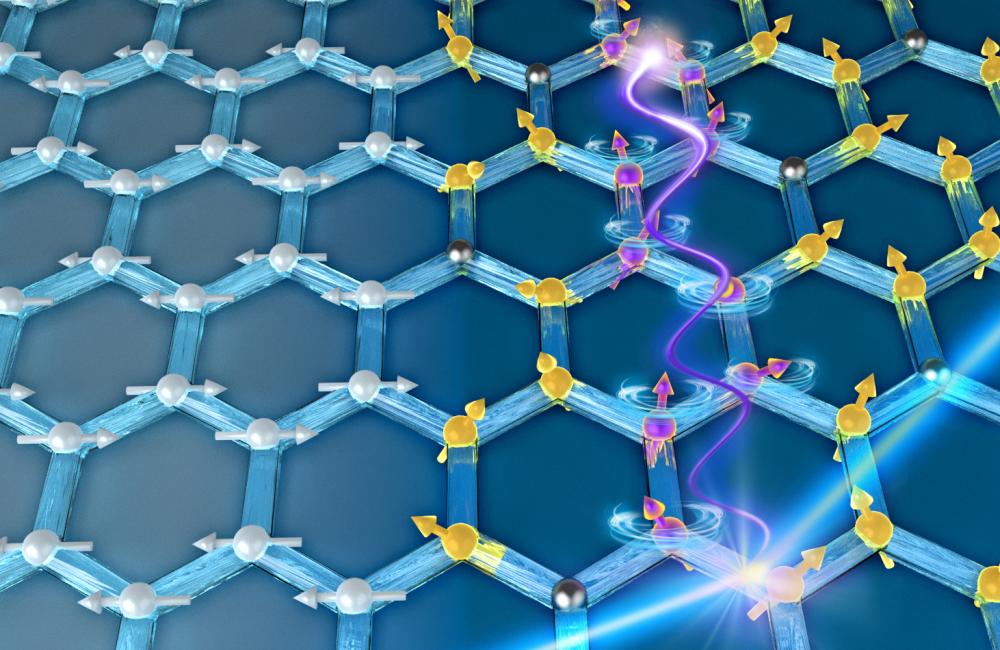January 3, 2018 - A novel approach for studying magnetic behavior in a material called alpha-ruthenium trichloride may have implications for quantum computing. By suppressing the material’s magnetic order, scientists from Oak Ridge National Laboratory and the University of Tennessee observed behavior consistent with exotic particles that are predicted to emerge when energy is added to a quantum spin liquid, or QSL. QSLs exist in certain materials where magnetic moments fluctuate in a liquid-like state rather than forming an ordered pattern. The team disrupted the material’s magnetic order by substituting iridium ions for ruthenium, then used neutron scattering to characterize the resulting magnetic behavior. “Through this process, we saw hints of highly sought-after particles, which were robust and perhaps even more intense in the QSL state,” said UT’s Paige Kelley, coauthor of a study published in Physical Review Letters. “This discovery could be the future basis for a topologically protected qubit in a quantum computer.”
Long-range ordering of magnetic ions in a graphene-like material (on left) is disrupted by placing nonmagnetic ions on the honeycomb lattice, resulting in a quantum spin liquid state (on right). As neutrons (blue line) scatter off the magnetically disordered material, they produce unusual particles such as Majorana fermions (purple wave) that move through the lattice disrupting or breaking apart magnetic interactions between “spinning” electrons. Credit: Jill Hemman/Oak Ridge National Laboratory, U.S. Dept. of Energy
Topics:
Media Contact
Communications Staff, 865.576.1946 | news@ornl.gov








